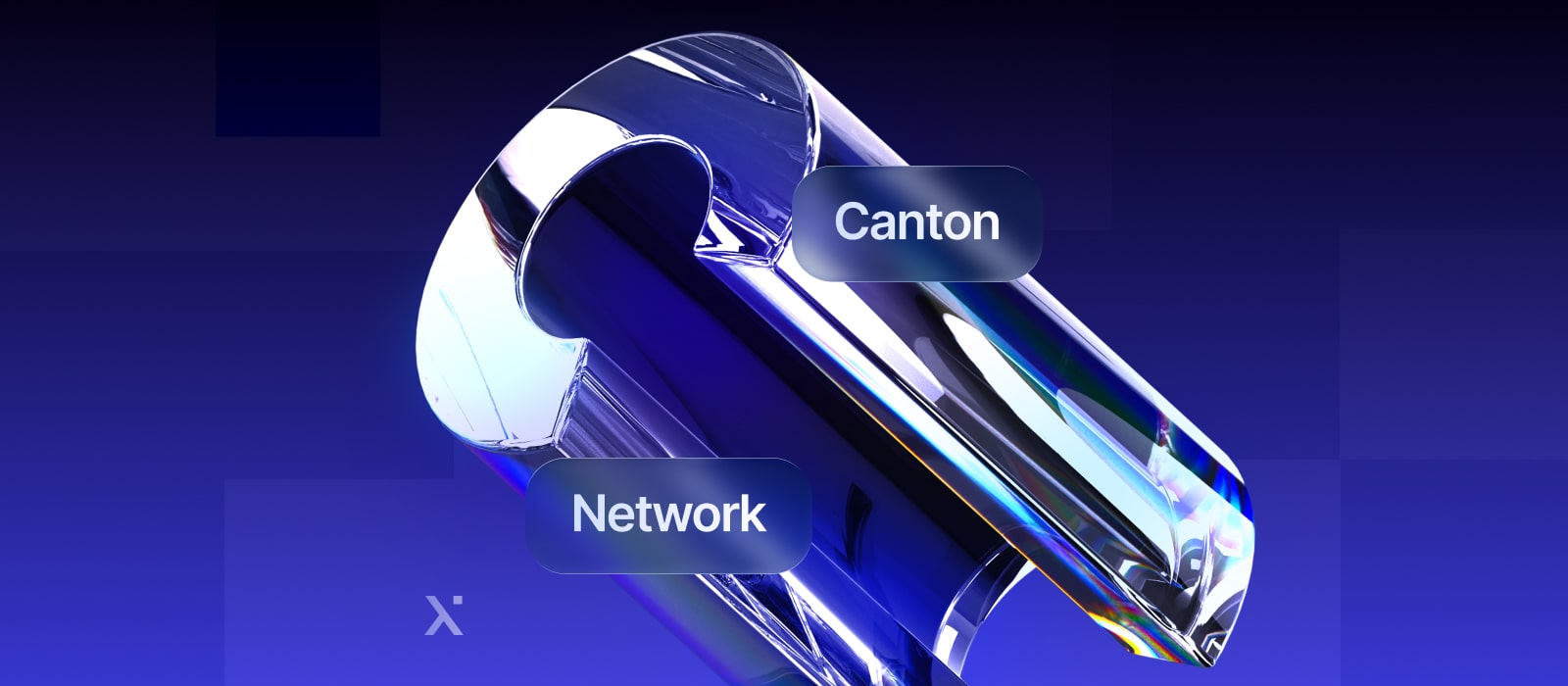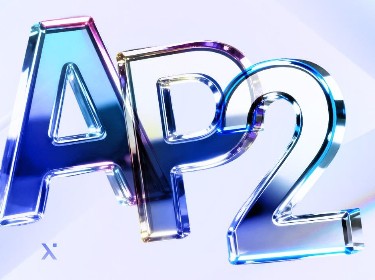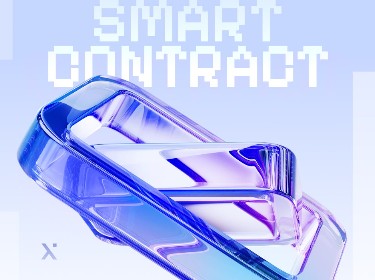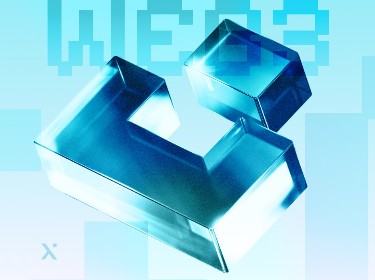The Canton Network – a new player on the field, but it’s not just another blockchain. It's a "network of networks" designed from the ground up to fix institutional gridlock. It’s built on one core promise: letting different, private systems connect and transact with each other without sacrificing privacy or control.
If you’re in the world of institutional finance, capital markets, or high-stakes B2B transactions, you’ve probably felt the pain of old and siloed systems. One bank’s ledger doesn’t talk to another’s. A trade settles, but the payment takes days, and reconciliation is a manual, error-prone process. Everyone is running on different tech, wrapped in different rules, all while trying to move trillions of dollars a day. It’s… well, it’s a mess.
For years, “blockchain” was pitched as the most reliable and secure source of truth for financial data. However, public chains like Ethereum are too public for sensitive financial credits. And private chains, while secure, just create… new silos.
What’s the magic of Canton.Network? Smart contracts. But not the kind you’re used to. This is where Canton.Network smart contract development applies a fundamentally different approach to automating agreements.
Our blockchain development team at PixelPlex has been deep in the constant research of Canton Network and its technology, building some of the first-to-market applications on the network. We’ve seen the potential, and we’ve also seen the confusion. So, we decided to put together this (yes, very comprehensive) guide. We want to clear the fog, dig into the tech, and show you why this is a big deal.
Ready? Let’s get into it.
What is the Canton Network? (And why should you care?)
First things first, let’s get our terms straight. The Canton Network is not a single blockchain. You can’t just go and buy “CantonCoin.” It’s not a competitor for Bitcoin or Ethereum in the public, retail space.
![]()
Instead, think of it as a secure, private-by-default infrastructure layer. It’s a “network of networks” that allows different applications, built by different organizations, to connect and interact. It’s powered by a smart contract language called Daml, and it’s all designed for one audience: institutions.
Are Corporate Crypto Stashes The Future? A No-Nonsense Guide to DATs
Inside Crypto Wallet MVP Development: Process, Costs, and Real-World Lessons
The challenge
Imagine Bank A has its own private ledger and bank B has its own. A large fund manager has a third. Today, they communicate by sending messages (like SWIFT) and then spending days reconciling to make sure everyone’s books match. It’s slow and expensive.
The Canton.Network allows each of these institutions to run their own “node” in a way that’s private to them. But it has a “Global Synchronizer*” that lets them compose transactions across their private ledgers.
What does that mean in simple words?
It means a trade and its payment can happen at the exact same time. An asset (like a tokenized bond on Bank A’s system) can be swapped for cash (a stablecoin on Bank B’s system) in a single, atomic transaction. No one gives up their goods until they have the cash, and vice-versa. This is called Delivery-versus-Payment (DvP), and it’s a holy grail for finance.
This technology, and the applications built on it, create a wide range of Canton.Network use cases, from 24/7 repo trading to tokenized assets. It’s backed by Digital Asset and a consortium of heavy-hitters like Goldman Sachs, BNY Mellon, and Microsoft, all of whom are testing it.
Why should you care? Because it’s not a theoretical “what if.” It’s a practical solution to the interoperability problem that has plagued finance for decades. And the way you build on it is through Canton.Network smart contract development.
The Global Synchronizer is the decentralized interoperability backbone of the Canton Network, acting as its core service for establishing a single, consistent ordering of transactions.
This function is crucial for ensuring that all participants, especially those operating across different interconnected domains, agree on the exact timing and sequence of events to guarantee data consistency and prevent conflicts.
The “smart” in Canton: Why Daml is the star of the show
If you’ve heard about smart contracts, you’ve probably heard of Solidity, the language used for Ethereum. Solidity is powerful, but it’s also, frankly, a minefield. It’s a low-level language where one tiny mistake can (and does) lead to multi-million dollar hacks. It’s also public-by-default, meaning every contract and transaction is broadcast to the world. That’s a non-starter for institutions.
Canton.Network smart contract development doesn’t use Solidity. It uses Daml. And Daml is a completely different animal.
Daml (short for Digital Asset Modeling Language) wasn’t built for just crypto enthusiasts. It was built from day one to model complex, multi-party business agreements. Here’s why that matters:
1. It’s about rights and obligations, not just code
A Solidity contract is just a piece of code sitting on the blockchain. It reacts when someone “pokes” it with a transaction.
A Daml contract is different. It explicitly defines:
- The Parties: Who is involved in this agreement?
- The Rights: What can each party do? (e.g., the buyer has the right to exercise the option).
- The Obligations: What must each party do? (e.g., the seller is obligated to deliver the stock).
- The Signatories: Who has to agree to create this contract?
- The Observers: Who else gets to see this contract?
This is the language of business, not the language of computer science. It makes it much easier for a business analyst or lawyer to read a Daml contract and confirm, “Yes, that is exactly what we agreed to.” You can get a much clearer picture by reading this Daml development services guide.
Blockchain in Payment Services: Trends, Technologies, and Development Best Practices
Top Blockchain Companies Revealed: How to Choose the Right Development Partner
2. Privacy is the default, not an exception
On Ethereum, if you want privacy, you need complex, gas-heavy add-ons like zero-knowledge proofs.
On Daml, privacy is the default.
When you create a Daml contract, the only people who can see it are the parties you explicitly name (like signatories and observers). The contract’s data is “sub-ledgered.” It’s not broadcast to the entire network. No one else on the Canton Network even knows that contract exists.
This means Bank A and Bank B can execute a billion-dollar deal, and Bank C (who is also on the network) has zero knowledge of it. This isn’t just a feature but the entire foundation, and this approach is fundamental to modern Daml development.
3. It “composes” atomically
Because it’s a unified language, it can “compose” contracts. A user can create a single “master” transaction that says, “I will only give you my bond (Contract 1) if you give me the cash (Contract 2).”
The Canton Network synchronizer ensures this either all happens, or none of it happens. This “atomicity” eliminates counterparty risk. Poof. Gone. Here’s how the algorithm goes:
| Phase | What happens |
| Trigger & validate | A user exercises a choice (an action). The ledger instantly validates their rights and the contract rules. |
| Execute consequences | If valid, the old contract is archived (spent) and one or more new contracts are created based on the logic. |
| Commit & distribute | The entire change (archive + create) is saved atomically (all or nothing) and privately shared only with the parties involved. |
For institutions that spend billions on risk management and collateral, this is a massive deal. It’s the core of what makes Canton.Network smart contract development so powerful.
Canton vs. “Other guys”
How does this all stack up against the platforms you already know? It’s easy to get lost in the alphabet soup of DLTs (Distributed Ledger Technologies).
Let’s break it down. Your main choices for “serious” business applications have generally been Ethereum (for its network effects) or a private chain like Hyperledger Fabric.
Here’s how they compare to Canton.
| Feature | Canton Network (with Daml) | Ethereum (Public) | Hyperledger Fabric |
| Privacy model | Privacy by Default. Contracts are only known to specified parties. No data is broadcast. | Public by Default. All transactions and contract code are on a public ledger. Privacy requires L2s/ZK-proofs. | Permissioned (Channels). Privacy is achieved by creating “channels” for specific parties. Good, but less flexible. |
| Smart contract language | Daml. Focuses on business logic, rights, and obligations. Easier to audit for business sense. | Solidity. Low-level, turing-complete. Very powerful but notoriously difficult to secure. | Go, Java, Node.js (Chaincode). General-purpose languages. Flexible, but don’t inherently model “agreements.” |
| Interoperability | Native & atomic. This is its entire purpose. Connects different private ledgers to compose transactions. | Poor (natively). Requires external “bridges” to talk to other chains, which are a massive security risk. | Siloed. A Fabric network is its own world. Connecting two Fabric networks is as hard as connecting anything else. |
| Consensus | Global Synchronizer. Not a traditional “mining” or “staking” model. It validates cross-domain transactions. | Proof-of-Stake (PoS). Secured by economic value. Global, but can be slow and expensive (“gas fees”). | Pluggable (e.g., Raft). Voted on by a trusted set of “orderers.” Fast and final, but centralized. |
| Target audience | Institutional finance. Banks, asset managers, and market infrastructure. | Public & retail. DeFi, NFTs, DAOs, general-purpose DApps. | Enterprise supply chain. B2B consortia, logistics, and identity. |
As you can see, Canton isn’t trying to be Ethereum. It’s not trying to “kill” it. It’s built to solve a completely different problem – one that Ethereum and Fabric were never designed for.
- You’re building a fully public, anonymous-by-design app (like a public crypto or NFT marketplace) where total transparency is the main feature.
- Your goal is to create a single, global, permissionless protocol (like a new DeFi lending pool) that anyone in the world can join and interact with.
- All your partners are happy to join and trust one single, shared ledger, and you don’t need the complexity of connecting multiple sovereign systems.
Advantages of Canton.Network smart contract development
Okay, we’ve covered the “what.” Now for the “why.” Why would you, as an institution, go through the effort of Canton.Network smart contract development?
The answer is simple: it lets you do things you literally cannot do today.
1. Unmatched privacy
It’s the most important – in traditional finance, privacy is not a feature, it’s a legal and commercial requirement. You cannot have your trading positions broadcast to your competitors.
Canton’s architecture guarantees this. The ledger data for your application lives with you. It is not shared with any other participant unless a specific smart contract requires it. This model is a perfect fit for private blockchain development where confidentiality is paramount.
This also means you have total control over your own node and data, making it much easier to satisfy regulators and auditors. You are not handing your data over to a “public” network.
Crypto Payment Gateway: Costs, Benefits, Implementation
Enterprise Blockchain: Prom Promise to Profit
2. True, atomic interoperability
The word “interoperability” is thrown around a lot. Usually, it means “bridges,” which are slow, clunky, and the number one target for hacks.
Canton’s interoperability is different. It’s not a bridge but a common language (Daml) and a common verifier (the Synchronizer) that let separate, sovereign systems compose a single transaction.
![]()
Simple example:
- A is on Application 1 (a Bond DApp).
- B is on Application 2 (a Payment DApp).
- A wants to sell a bond to B for $1 million.
- With Canton, A and B can create a single transaction that says: “Atomically transfer the bond from A to B and transfer the $1M from B to A.”
- This transaction is sent to the network. The synchronizer confirms that both Application 1 and Application 2 are “on board” and that the transaction is valid on both ledgers.
- Only then does it commit. Both transfers happen at the exact same millisecond.
No risk or 3-day settlement window, no reconciliation. This is the goal of a Canton.Network smart contract development company – to build these “riskless” workflows.
3. Built for regulation, not to avoid it
A lot of the crypto world was built with an… adversarial relationship with regulation. Canton is the opposite. It’s built to embrace it.
- Data sovereignty: Regulators (like the Fed or the ECB) can be given an “observer” node to monitor activity without seeing commercially sensitive data.
- Auditability: Daml’s explicit logic makes auditing a breeze. You can prove what the contract does and who has seen what data.
- No “gas” volatility: It’s a permissioned network. You don’t have unpredictable transaction fees based on how busy the public network is.
| Network | Fee basis | Business impact |
| Other blockchains | Volatile auction: Fees spike with all network traffic. | Unpredictable: Costs can change wildly, making budgeting impossible. |
| Canton Network | Fixed rate: Fees are based on your data usage, not public traffic. | Predictable: Costs are stable, allowing for reliable business planning. |
This focus on compliance and security is why you need strong data security services to complement any development.
4. It’s just… smarter
The Daml language itself is a huge advantage. Because it’s so high-level and business-focused, development cycles are often much faster than with Solidity and others. You spend less time worrying about “re-entrancy hacks” or “gas optimization” and more time focusing on “Does this contract correctly represent our business deal?”
This makes the whole process of Canton.Network smart contract development less of a pure-tech-bro exercise and more of a collaborative business-and-tech one.
Custodial vs. Non-Custodial Wallet: Everything You Need To Know
The Opportunities of Banking in Metaverse: What Companies Must Know
The ecosystem: it’s more than just contracts
A platform is useless without an ecosystem. You need wallets, you need exchanges, you need assets. This is where the smart contracts build the network.
![]()
When you’re doing Canton.Network smart contract development, you’re not just writing code. You’re building the very “apps” that make the network valuable.
Tokenization
Tokenization is the process of creating a digital representation of a real-world asset (like a bond, a share of stock, a real estate fund) on a blockchain.
A report from the Boston Consulting Group (BCG) projected that the market for tokenized assets could reach $16 trillion by 2030. That’s not a typo. Trillion, with a ‘T’.
Canton is perfect for this. You can create a Daml smart contract that represents a “Tokenized Bond.” This contract defines:
- Its face value.
- Its maturity date.
- Its coupon payment rules.
- Who is allowed to own it (e.g., only “accredited investors”).
This contract then lives on the issuer’s private ledger. But because of Canton’s interoperability, it can be traded, settled, and used as collateral with any other participant on the network, all while respecting the privacy rules.
Wallets
You can’t use your MetaMask wallet here. The Canton Network requires a different kind of wallet – one that understands Daml’s “contract-based” model, not just “coin-based” balances.
A Canton-compatible wallet needs to:
- Securely store your identity.
- Show you the contracts you are a party to (e.g., “You have an IOU from Bank A”).
- Allow you to act on those contracts (e.g., “Accept this IOU”).
This is a specialized field. In fact, our team at PixelPlex built CantonLoop, the very first self-custodial wallet for the Canton Network. It was a complex challenge, but it’s critical infrastructure. You can read more about the process in our Canton Network wallet development guide. And, of course, this builds on years of expertise in general crypto wallet development.
Canton Loop
The Canton Network’s first self-custodial wallet
First non-custodial wallet on Canton
Generated $3M revenue in 2 months since launch
Ranked in Top 10 Canton Coin Validator Leaderboard
Explore the case studyMarketplaces and exchanges
Once you have tokenized assets, you need a place to trade them. Daml smart contracts are the “engine” for building a decentralized, private marketplace.
You can create a set of contracts that act as an “order book.” Participants can submit private bids and offers. The smart contracts then automatically match buyers and sellers and execute the atomic DvP settlement we discussed earlier.
Data verification (KYC/AML)
This is a huge pain point. Every time a bank onboards a new customer, they have to do a “Know Your Customer” (KYC) check. This is expensive and redundant.
With Canton, you can build a reusable KYC system.
- A trusted “KYC Provider” (App 1) verifies a customer.
- They issue a “Verified” smart contract (a credential) to that customer.
- The customer can then show this credential to Bank A (App 2) and Bank B (App 3) as proof.
- The credential’s “observer” is the KYC Provider, so Bank A knows it’s real.
The customer controls their data, and the banks don’t have to re-do the work. We know this is possible because, well, we built this too. Our Canton KYC Verification Platform was a first-to-market solution demonstrating this exact workflow.
This whole ecosystem is just getting started, which you can learn more about in this Canton.Network explained article.
Real-world applications: industries & use cases
The Canton.Network use cases are squarely focused on high-value, B2B industries.
1. Banking and capital markets
The entire financial stack is up for improvement.
- Payments: Cross-border payments and settlements that are instant and final, not T+3.
- Securities: 24/7 trading of tokenized stocks, bonds, and funds.
- Derivatives: Smart contracts that automatically manage the entire lifecycle of a complex swap or option, from creation to settlement.
- Repo & securities lending: Automating the lending of assets and cash to provide market liquidity, all with automated collateral management.
This is a massive upgrade from today’s systems. It’s not just “fintech”, it’s a re-imagining of the core infrastructure. We have a lot of experience in traditional banking software development, and we see this as the logical next step.
2. Insurance and reinsurance
The insurance industry runs on complex, multi-party agreements. A Daml contract is perfect for modeling an insurance policy.
- Claims processing: A contract could automatically pay out a claim when a trusted “oracle” (like a weather service) reports a specific event (like a hurricane).
- Reinsurance: Managing the complex “waterfall” of payments between multiple reinsurance companies can be fully automated.
3. Legal document management
Think about complex legal agreements. M&A deals, ISDA agreements, syndicated loans. These are just “dumb” Word docs today.
- “Smart” legal contracts: A Daml contract can be the enforceable digital twin of a legal agreement. The rights and obligations are no longer just text – they are code.
- Automated escrow: A smart contract can hold assets in escrow and release them automatically when all parties fulfill their obligations.
This is a growing field. You can read more about blockchain in legal document management on our blog.
The common thread? All these industries are built on multi-party agreements where privacy and trust are essential. That is Canton’s sweet spot.
Assembling your team and tech stack
Okay, you’re convinced. You have a killer use case. Now you want to build it. What do you actually need for Canton.Network smart contract development?
It’s not the same as building a simple website. You need a specialized team.
Who you need
- Business analyst: This might be the most important role. You need someone who deeply understands your business process (e.g., “post-trade settlement”) and can translate it into the logic of “parties, rights, and obligations” for the Daml developers.
- Daml developer: This is your core builder. This person writes the smart contracts. They need to be an expert in Daml and its “functional” programming style. This is a rare, but growing, skillset.
- Blockchain architect: This person designs the “off-chain” part. How do your smart contracts connect to the Canton Network? How will you run your participant node? How does it integrate with your existing legacy systems?
- Integration/backend engineer: Your Daml app doesn’t live in a vacuum. You need a way for your current systems (written in Java, C#, etc.) to talk to it. This engineer builds the APIs and integration layers.
- QA: Just because Daml is “safer” doesn’t mean it’s “un-hackable.” You still need rigorous testing. Can a party do something they shouldn’t be able to? What happens in an edge case? This requires a different mindset than traditional QA.
| Role | Responsibility | Hourly rate (USA) |
| Business Analyst | Translates business logic into Daml’s “rights & obligations” framework. | $80 – $140 |
| Daml Developer | Writes the core Daml smart contracts (a specialized, functional role). | $100 – $180 |
| Blockchain Architect | Designs the participant node infrastructure and system-wide data flow. | $140 – $250+ |
| Integration Engineer | Connects the Daml app to existing databases and legacy system APIs. | $90 – $160 |
| QA Engineer | Tests the contract logic for loopholes and unauthorized actions (like an auditor). | $100 – $175 |
What they use
- Daml: The smart contract language.
- Canton: The network protocol (or “ledger”) that runs the Daml contracts.
- Daml SDK: The set of tools for writing, testing, and running Daml apps.
- JSON API / gRPC: These are the “doorways” that let your existing applications talk to the Daml ledger.
- Java, Scala, Kotlin, or C#: Often used to write the “integration layer” that connects the Daml ledger to a user interface or other backend systems.
![]()
As you can see, this is a multi-disciplinary effort. It requires tight integration between your business logic and your technical implementation, which is where blockchain integration services become critical.
Protecting Ideas: How Blockchain Is Becoming the Guardian for Your Creations
Blockchain Technology ETFs: A Smarter Way to Invest in Crypto Without Buying Bitcoin
What’s the cost of Canton.Network smart contract development?
You’ve seen the team you need, so you know this isn’t a “weekend project.” What’s the real cost?
Well, if you’ve read our other article on smart contract development cost, you’ll know the answer is… “it depends.”
A “smart contract” can be as simple as a digital IOU or as complex as a global derivatives-matching engine. Asking “how much for a smart contract” is like asking “how much for a building.” Are we building a garden shed or a skyscraper?
Let’s break down the factors that drive the cost.
1. Complexity of the business logic
This is the single biggest driver.
- Simple: A two-party “trade” contract. A buyer proposes, a seller accepts. Done.
- Medium: A multi-party “escrow” agreement. It needs to handle multiple signatories, hold assets, and release them based on external triggers (an “oracle”).
- High: A full-blown marketplace. You need contracts for an order book, matching logic, KYC/AML rules, and automated settlement waterfalls across dozens of participants.
2. Number of roles and parties
The more parties and roles (e.g., issuer, investor, auditor, regulator, custodian), the more complex the Daml logic becomes. Each role has different rights, and you have to model all the interactions between them.
3. Integration with legacy systems
Your Daml application is not an island. It must talk to your existing systems.
- Does it need to pull data from a 30-year-old mainframe?
- Does it need to push settlement data to your current accounting software?
- Does it need to integrate with your existing user-facing web portal?
Integration is often where the bulk of the “non-Daml” work lies. This is where you’ll need top-tier data analytics services and integration specialists.
4. Security and auditing
For anything in finance, “good enough” is not good enough.
- Internal audit: Rigorous testing of the Daml logic.
- External audit: Hiring a specialized firm to try and “break” your contracts. This is not optional.
- Formal verification: For mission-critical contracts, you might use mathematical methods to prove your contract is secure.
You must budget for security audit and risk management from day one.
The numbers
With all those disclaimers, here are some very rough ballpark figures for a project with an experienced Canton.Network smart contract development company.
![]()
Proof-of-Concept (PoC):
- Cost: $25,000 – $50,000
- What you get: A simple Daml application with 1-2 core workflows. It’s to prove the concept and show it to stakeholders. It is not production-ready.
Minimum Viable Product (MVP)
- Cost: $50,000 – $100,000
- What you get: A production-ready application for a limited use case. It’s built, tested, and integrated with 1-2 key systems. It’s ready to be used by a few “pilot” participants. This is a common entry point for smart contract development services.
Full-scale institutional platform
- Cost: $300,000 – $500,000+
- What you get: A complex, multi-party, multi-role system. It’s integrated with numerous legacy systems, has a custom UI, has passed extensive external audits, and is ready for high-volume institutional use.
Yes, the numbers are high. But remember what this is replacing. The cost of not fixing these problems – the manual reconciliation, the data errors, the settlement risk – is often much higher. Gartner research has highlighted that poor data quality costs organizations an average of $12.9 million annually. Suddenly, that $300k MVP looks pretty attractive.
Why choose PixelPlex?
You need a team that understands institutional finance, complex business logic, and a brand-new, highly specialized tech stack. That’s a tall order.
This is why we’re here.
At PixelPlex, we aren’t just consultants on this technology. We are builders. We’ve been an active partner in the Canton ecosystem from the early days. When a company is looking for Canton.Network exchange development services to build compliant trading platforms and tokenized asset infrastructures, or for a Canton.Network smart contract development company, they often find us.
Why? Because we have the receipts. We don’t just talk – we build.
- CantonLoop: As we mentioned, we developed the first-ever self-custodial wallet for the Canton Network. This was a foundational piece of infrastructure. It required a deep understanding of Daml’s identity and contract model.
- Canton KYC Verification Platform: We also built the first-to-market reusable KYC platform. We solved the complex, multi-party workflow of “verifying once, using many,” proving a core value proposition of the network.
- Canton View: An indexing solution for monitoring transactions across the network, a tool essential for visibility and debugging in a complex environment.
- …And a lot more: We’ve built other custom smart contracts for clients, from asset tokenization platforms to private market-matching engines.
We are one of the few teams on the planet that has proven, hands-on experience in building and deploying real applications on this network. Our blockchain consulting goes beyond theory and into practice.
| $50M end-users onboarded across our clients’ dApps |
450+ projects completed |
0 exploits since day 1 |
| $1.2B raised by clients |
1M+ smart contracts on mainnet |
3 unicorns exceeding $1B in value |
We offer end-to-end Canton.Network smart contract development services, from the initial “is this a good idea?”-workshop to the full-scale build, integration, and launch. If you’re looking for Canton.Network development services, we believe we’re the best team for the job.
Conclusion: the new foundation for finance
The old way of siloed systems, T+3 settlement, and endless reconciliation is, frankly, too slow and too expensive for the time we live in.
The Canton Network, powered by Daml, presents a new path. It’s a path that respects the need for privacy and control while finally delivering true, atomic interoperability.
This journey into Canton.Network smart contract development is not a simple one. It requires new skills, new thinking, and a deep partnership between your business and technology teams. But the payoff isn’t just “efficiency.” It’s the ability to create entirely new markets, new products, and new ways of moving value that are impossible today.
That’s why we at PixelPlex are so focused on this. We wrote this massive article because we genuinely believe this technology is a game-changer. Our blockchain development team is always exploring, building, and ready for the next challenge.
If you’ve read this far (congratulations), you’re probably serious about this. If you’re ready to discuss how your organization can use this technology, or if you just want to pick the brains of the team that’s been building on it, we’d be glad to assist.
Get in touch. Let’s build the future of finance, together.
FAQ
The biggest difference is privacy! Canton is built for institutions, so it keeps all your sensitive transaction data private by default, unlike public chains where everything is visible.
Daml is special because it’s designed to talk in business terms – like “who owes what to whom” – which makes it much safer and easier to write complex financial agreements correctly.
While it’s a perfect fit for banks, it’s also fantastic for insurance, legal tech, and any industry that needs complex, private agreements between multiple parties to work flawlessly.
The best first step is to chat with a specialized Canton.Network smart contract development company, like us! We can help you explore your idea and map out a plan.
Our services cover the whole journey, from the initial strategy workshop and writing the Daml code to testing, auditing, and integrating the final application with your current systems.




